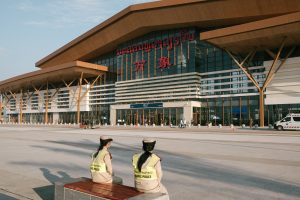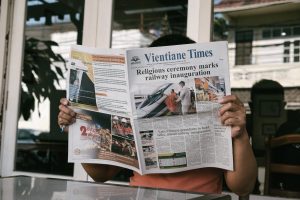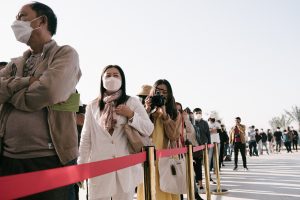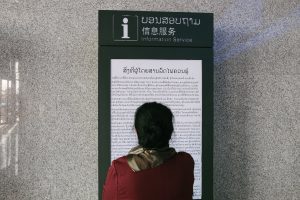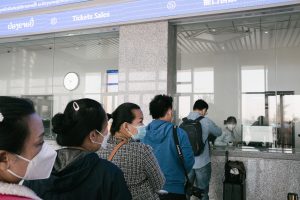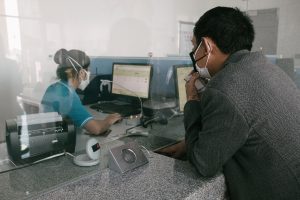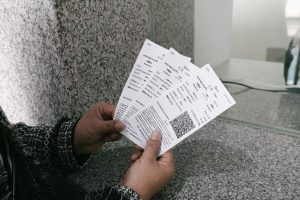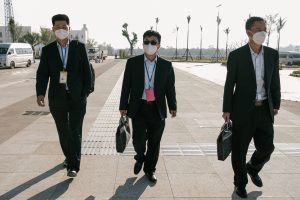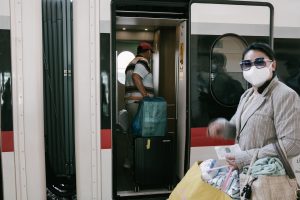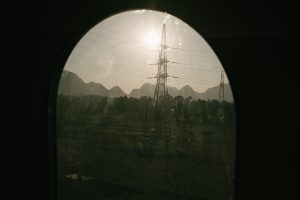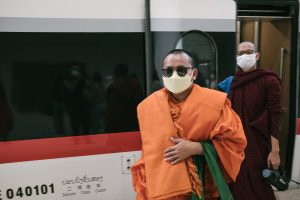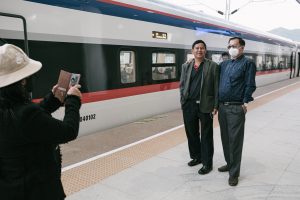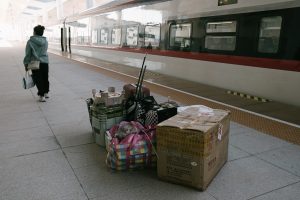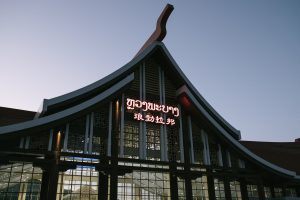As the train sped through the Lao forest at 160 kilometers per hour, I had a flashback to last February, when I traveled from Vientiane to the Chinese border to document the developments at the Boten Beautiful Land Special Economic Zone. Back then, the trip took a total of 18 hours, spanning over two days on the notorious National Road 13, a journey marked by stunning panoramas, potholes, thick dust, and harsh traffic. Stretches of the road can be quite dangerous and big trucks, hauling raw materials in the direction of China, slow down the ride significantly.
For many, these long journeys now belong to the past. The brand new Laos-China Railway connecting the capital Vientiane to Kunming in China’s Yunnan province is finally completed and open for freight and passengers. (Inside Laos, only a passenger service is currently available due to the COVID-19 pandemic.) It took $5.9 billion and high-end Chinese engineering to tame the nearly impervious landscape of northern Laos and produce a masterpiece of transport infrastructure. The 414-kilometer single-gauge track from Vientiane to Boten includes 61 kilometers of bridges and 198 kilometers of tunnels. Traveling to the Chinese border takes now less than four hours on the Lane Xang Electric Multiple Unit (EMU) passenger trains, and costs of 330,000 Kip (around $33) for a second class seat. (A cheaper, but slower “ordinary train” will soon be an option, at a cost of 238,000 kip.) During the railway’s opening ceremony on December 3, Lao President Thongloun Sisoulith marked the day as the beginning of a new era for Laos, as the country made a significant step on its transition from a land-locked mountainous nation to a land-linked logistical hub.
On its opening day, December 4, the railway station in Vientiane was packed from early morning with middle class “Vientianers” determined to secure what was, for many, the first ever ride on a train. The excitement was palpable, before and after checking in. “Connection is cut when we are in the tunnels, but underground signal repeaters are going to be installed soon,” said Seng, a Thai YouTuber, while recording a livestream. In the next coach, a team of Lao videographers commissioned by a Chinese state TV channel were shooting a documentary on the railway; they have been following its developments for the last six months. People took selfies, video-called relatives living in other provinces, and cheered with each other, proud to be part of an historic day.
The Laos-China Railway is part of the Belt and Road Initiative (BRI), Beijing’s $1 trillion transnational development strategy that aims at connecting China with over 70 countries across Asia, Africa, and Europe via the construction of roads, rails, seaports, and airports. While Lao policymakers expect the railway to cut transport costs, boost foreign direct investments, and foster economic growth, the International Monetary Fund has expressed concern over the fact that the Chinese financial support for railway construction mostly comes in the form of loans, highlighting the tangible debt risk for Laos. The country’s debt to China was estimated to be 45 percent of the country GDP in 2019. Earlier this year, unable to meet its debt obligations, the government of Laos signed a 25-year concession agreement that allows a majority Chinese state-owned company to build and manage a large part of the country’s power grid.
At the time of our arrival in Luang Prabang, the sun was setting behind the steep mountains that surround the former royal capital. Minivans were waiting at the exit of the station to take us towards the city center. As I stepped out of the train, a lady who travelled in the same carriage tapped on my shoulder. “Laos is strong, isn’t it?” she said proudly. I gave her a big smile in return and nodded.
It is not clear how Laos is going to pay off its debt to China, but for almost two hours on the EMU train it seemed that everyone, including me, had forgotten about the railway’s financial implications and felt they were witnessing a milestone of Laos’ modern history.













